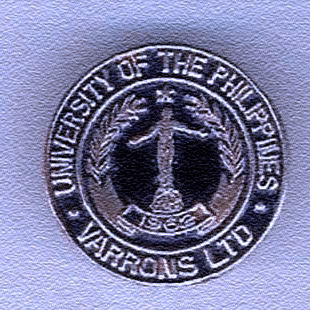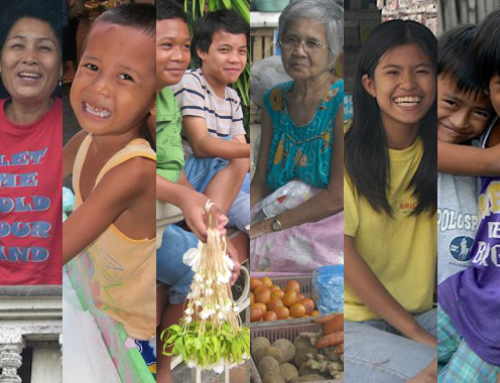Research
Objective and target output setting
Since many of you are engaged in research, I will devote some time to this important activity. Research is very important and challenging but is also a difficult activity. Sometimes, the most challenging problem is the lack of funds.
The first point I would like to share with you is how to set your objective. To succeed in research, you have to fully understand why you are doing it and you have to be clear with your objectives. Basically, in conducting research, your objective is to use the scientific method to achieve any or all of the following outputs: 1) data to advance knowledge, 2) technologies for verification, refinement or adoption by the intended user; and 3) data that could be used for policy formulation. You need clear and focused objectives to achieve your target outputs. If your objective and target output is not clear, you would not know when to effectively start and end.
The second point I would like to share with you is how to strategically choose your research approach. Most researchers choose to answer the research question “why?” while a few choose to conduct research to answer the question “why not?”. Both kinds of researchers are normally given awards of recognition, if they did their research well. However, the latter type of research, which is usually more expensive and more difficult to undertake, usually lays strong foundations for other research to follow, and usually get the most prestigious science awards. Most of the Nobel prize-winning research answers the question “why not”. Where there are funds for this purpose, it would be good for the Varrons to include this approach in their research.
The “why not?” approach also can find application in entrepreneurship or development in general. I remember one annual meeting of the Asia Pacific Coconut Community (APCC) meeting I attended in the Marshall Islands five years ago. Listening to the presentations of 15 member countries, I noticed that most of the problems they presented were also presented in a previous meeting of the APCC which I attended five years before. When asked to comment on the presentations, I diplomatically offered my observations that the problems of the coconut industry seem to be difficult that the problems of five years ago did not seem to go away. I offered the solution that when the traditional solutions do not work it was time to ask the question “why not?” do it the other way around, say turn the proposed solution around 180 degrees- in the opposite direction.
For example, on their identified problem of decreasing market share of coconut oil in the traditional American and European markets, why not turn it around 180 degrees and develop the Asia Pacific market where 85% of coconuts are grown and where more than 50% of the world population lives. This would be a bigger market than America and Europe. As another example, I cited their problem of decreasing coconut farm productivity due to aging trees and the apparent lack of good lands for expansion of coconut plantings inland as most of the good lands are being devoted to food and other more profitable crops and for urban development. I proposed that each coconut producing country turn 180 degrees and plant coconut in the coastal areas of the country where no other crop can be commercially grown. The highest coconut yields are obtained in the coastal areas because the coconut loves salt; the area has a good water regime as all the water from the mountains run into the sea; the big ocean waters buffers the coastal areas against large changes in temperature which is good for pollination and fruit set; and lastly, the poorest people live along the coast and such a coastal planting approach would address the urgent problem of poverty. After my presentation, the Ministers of Agriculture of five countries approached me and said that they like the 180 degree idea and indicated that they will adopt such a strategy for their countries.
Research funding
One of the most difficult problems of researchers is to find sufficient and sustainable source of funds for their research projects. There are two approaches to this problem, both of which I have tried. One approach is to develop a big project proposal, submit it to a donor and wait for its approval. The other approach is to start with a small project using whatever available resources, do it well and show results to donors. Donors, especially if they do not know you, would prefer the latter.
While I was working with the International Potato Center (CIP) for 10 years and with the International Plant Genetic Resources Institute (IPGRI) for 12 years, I had 2-5 projects at any one time worth no less than one million US dollars each. These did not start as big projects. For example, my “Poverty reduction in coconut growing communities” project with the Asian Development Bank started as a 500 US$ project, but using this approach, I was able to get a four-time grant of one million US$ each.
The idea that I would like to share with you is that if you use the right strategic approach, there are always funds for good research project. The reason is that donors allocate a budget every year and the funds have to be spent within the year. That means that if they do not receive a good proposal from you, they will award the funds to other projects.
Community development and natural resources development
The two most attractive areas for development today are in the area of poverty reduction and environmental protection and improvement. I suggest that UPVL put emphasis on these two areas of activity, whether you are engaged in teaching, research, extension and entrepreneurship. This is because, these areas of national concern are very rewarding and large amounts of funds are allocated by donors for these activities.
Community development
I will cite my current project on “Poverty reduction in coconut growing communities” as an example of a community development project which the FCDF where I serve as President is involved in. Despite the many uses of coconut in the food, industrial, nutraceutical, cosmeceutical and lately, medicinal areas, the full benefit of the industry has not yet trickled down to the coconut farmers who are poor and live below the poverty line. In our farmer participatory-survey of coconut farmers which we conducted in Luzon, Visayas and Mindanao, farmers told us that they are poor because they lack appropriate technologies and affordable village level equipment, capital and market access. Thus we set up a project to test the hypothesis that if these necessities are provided, coconut farmers need not be poor. We also noted that for these poverty reduction interventions to be sustainable, we need to provide a support system such as establishment of a community-based organization and training and capacity building.
Using this as a project framework, we tested and promoted four income generating activities namely: 1) diversification of coconut products from all parts of the coconut, 2) inter-cropping food, security and medicinal crops, 3) livestock integration, and 4) propagation of coconut and other planting materials in community nurseries. In a period of three years, coconut farmers in the project sites increased their incomes by up to three times, nutrition and food security were enhanced. Previously socially disadvantaged unemployed and underemployed women generated incomes that enhanced their self esteem and stature as assets to their communities.
Starting with three communities in the Philippines, the project has now expanded to 48 communities in 15 countries worldwide with the support three international donors. FCDF is now developing project proposals on poverty reduction in rice growing communities and in forest margins and slash and burn agriculture areas. In this regard, it is important that UPVL have expertise in the area of social sciences as we need to understand the socioeconomic basis of poverty to increase the chances of funding and to ensure success of our poverty reduction projects. This is one reason why I am suggesting that UPVL diversify its membership in the social science areas.
Last Updated on October 12, 2016 by Tudla_Admin
















Leave A Comment